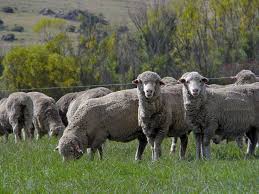Good management of ewes and rams before joining is important for achieving good conception rates. Just as important is the management of ewes between joining and weaning and measuring their reproductive rates. Pregnancy scanning to identify dry ewes and those with single, twin or more lambs will show where losses are happening. It will also allow ewes to be managed separately according to their different requirements. Without this information it not possible to see whether low lambing rates are due to low conceptions, abortions or poor lamb survival.
Conception is a result of the ovulation rate of the ewes and the fertility of the rams. These factors are influenced by the time of joining, feed supply, genetics, pasture toxicities or health problems.
Good conception at pregnancy scanning shows the potential within the flock and allows you to measure the losses occurring between scanning and marking. High losses (greater than 20%) can lead to investigation of the cause of losses and allow preventative management.
Losses post scanning can be due to abortions, dystocia, stillborns, or death of weak lambs that die within the first few days of birth from poor milk supply,
starvation, exposure and or predation.
Infectious causes of abortion or stillborns in sheep include: Toxoplasma, Listeria and Campylobacter. Campylobacteriosis (campy or vibrio) in sheep is the most common cause of abortion in Australian sheep and is caused by bacteria. Once sheep have been affected they become immune to the disease. For this reason, one of the indications that you may have campy is a low reproductive rate in younger ewes compared to older ewes (18% difference or higher).
In the past it has been difficult to diagnose the presence of Campylobacter infection; however there is now a blood test available through Coopers Animal Health. The best ewes to test are maiden ewes that have been scanned in lamb, but are dry and have little or no udder development at lamb marking. Once testing has been done, advice on the economics of vaccination will be given. Vaccination can be done at the time of joining.
Listeria is another common bacteria that can cause abortions and has been linked to feeding mouldy silage to sheep. Listeria is likely to be present in most silage but is only a problem in silage that hasn’t been properly sealed or cured (pH above 5-5.5). Care should also be taken when grazing pregnant ewes on other feed sources where mould or listeria could develop.
Coopers Animal Health is currently undertaking a survey across areas of Australia for Campylobacter and Toxoplasmosis in sheep flocks. http://www.coopersanimalhealth.com.au/
For more information on increasing reproductive performance, view the Making More from Sheep “Wean more lambs” at: http://www.makingmorefromsheep.com.au/wean-more-lambs/index.htm or visit http://www.lifetimewool.com.au/index.aspx
Tweet